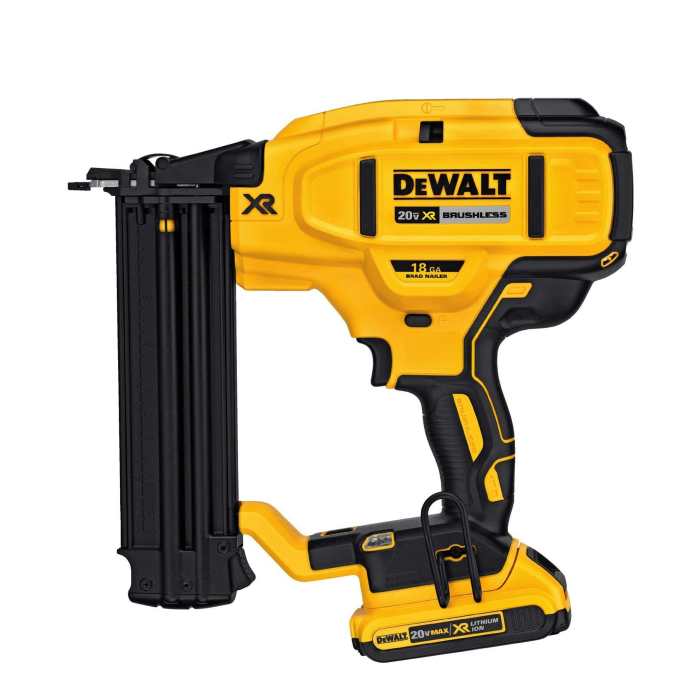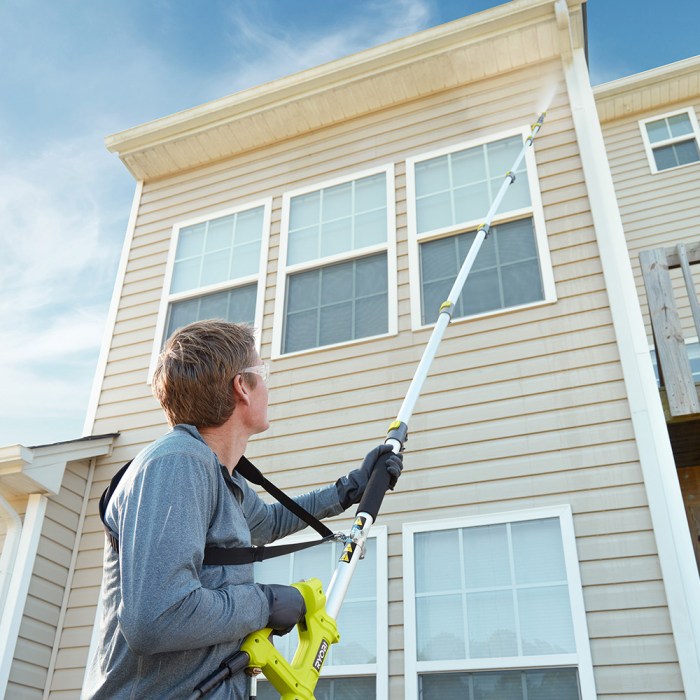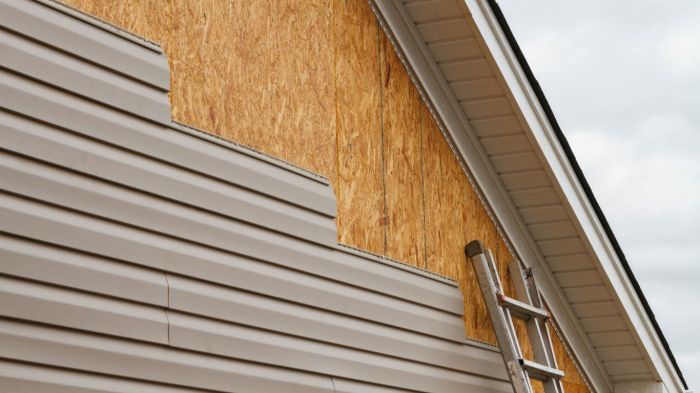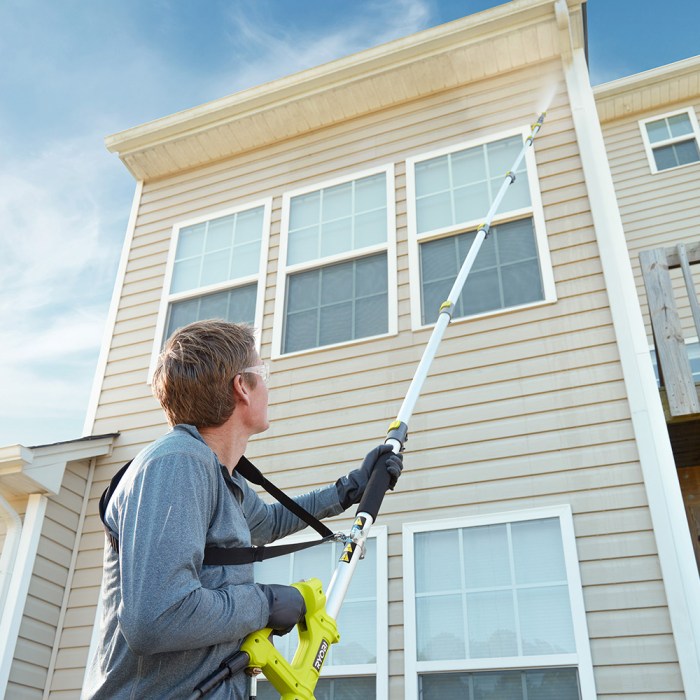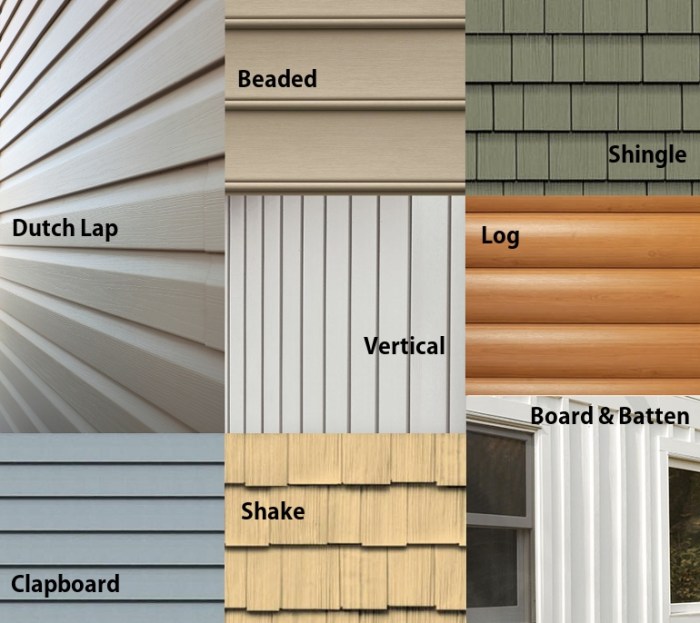Is Hardie Board the Best Siding?
Hardie Board Durability and Longevity: Is Hardie Board The Best Siding
Is hardie board the best siding – Hardie board siding, a fiber cement product, is known for its exceptional durability and longevity, significantly outperforming many other common siding materials. Its robust composition allows it to withstand harsh weather conditions and resist damage from various sources, making it a popular choice for homeowners seeking a long-term, low-maintenance solution.
This section will delve into the specifics of Hardie board’s lifespan, maintenance requirements, and resistance to environmental factors and damage.
Lifespan and Maintenance Comparison of Siding Materials
The following table compares the expected lifespan, maintenance needs, and typical costs of Hardie board siding against vinyl, wood, and aluminum siding. These figures are estimates and can vary based on factors such as climate, installation quality, and maintenance practices.
| Siding Material | Expected Lifespan (Years) | Maintenance Needs | Typical Cost per Square Foot |
|---|---|---|---|
| Hardie Board | 50+ | Occasional cleaning, repainting every 10-15 years | $3-$8 |
| Vinyl | 20-30 | Occasional cleaning, occasional repair of minor damage | $1-$4 |
| Wood | 15-30 | Regular painting or staining, occasional repair or replacement of damaged boards | $2-$6 |
| Aluminum | 40+ | Occasional cleaning, repainting may be needed depending on finish | $2-$5 |
Hardie Board’s Performance in Various Weather Conditions
Hardie board’s resistance to moisture, extreme temperatures, and UV radiation contributes to its extended lifespan. In extremely hot climates, the material’s stability prevents warping or expansion, unlike wood which can crack or warp under intense heat. Similarly, in freezing conditions, Hardie board’s resistance to cracking and splitting surpasses that of wood siding.
High humidity environments pose minimal risk to Hardie board due to its inherent moisture resistance. However, proper installation and caulking are crucial in all climates to prevent water penetration. Exposure to prolonged, intense UV radiation can lead to some fading, but this is generally less significant than the fading experienced by wood or vinyl siding.
Resistance to Insects, Rot, and Fire
Hardie board’s composition renders it virtually immune to insect infestation and rot, unlike wood siding which is susceptible to both. Termites and other wood-boring insects cannot penetrate the dense fiber cement material. Furthermore, its non-organic nature prevents rot and fungal growth, eliminating the need for regular treatments.
Hardie board also possesses significant fire resistance, receiving a Class A fire rating, the highest available. This superior fire resistance makes it a safer option compared to wood siding, which is highly flammable. While no material is completely impervious to damage, Hardie board’s inherent properties significantly reduce the likelihood and severity of damage from these sources.
Hardie Board Cost and Installation
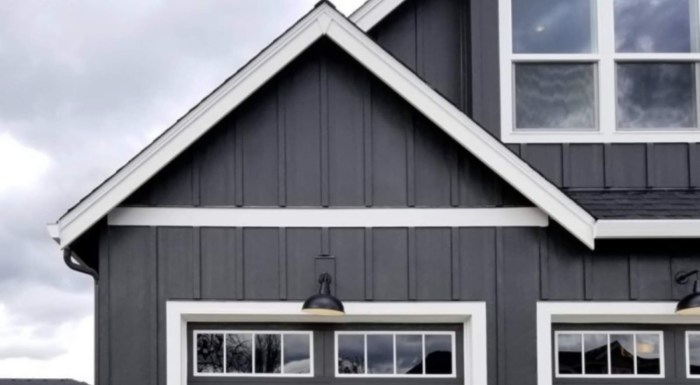
Choosing Hardie board siding represents a significant investment in your home’s exterior. Understanding the associated costs, including materials and labor, is crucial for budgeting and planning your project effectively. This section provides a detailed breakdown of the expenses involved, considering factors that influence the overall price.Hardie board siding costs vary considerably depending on several key factors.
The size of your house directly impacts the amount of material needed. More complex installations, involving intricate designs or significant repairs to the underlying structure, will also increase the cost. Finally, regional differences in labor rates and material availability play a significant role in determining the final price.
Cost Breakdown of Hardie Board Siding
The following table illustrates a range of costs for Hardie board siding installation, considering variations in house size, installation complexity, and regional differences. These figures are estimates and may vary based on specific project requirements and contractor pricing. Remember to always obtain multiple quotes from reputable contractors in your area.
| Factor | Small House (1000 sq ft) | Medium House (2000 sq ft) | Large House (3000 sq ft) |
|---|---|---|---|
| Material Cost (Low) | $4,000
|
$8,000
|
$12,000
|
| Material Cost (Average) | $6,000
|
$12,000
|
$18,000
|
| Material Cost (High) | $8,000
|
$16,000
|
$24,000
|
| Labor Cost (Low) | $4,000
|
$8,000
|
$12,000
|
| Labor Cost (Average) | $6,000
|
$12,000
|
$18,000
|
| Labor Cost (High) | $8,000
|
$16,000
|
$24,000
|
| Total Cost (Low) | $8,000
|
$16,000
|
$24,000
|
| Total Cost (Average) | $12,000
|
$24,000
|
$36,000
|
| Total Cost (High) | $16,000
|
$32,000
|
$48,000
|
Labor Costs Compared to Other Siding Options
Hardie board installation typically commands a higher labor cost than vinyl or aluminum siding due to the more complex installation process. However, the increased durability and longevity of Hardie board often offset this higher initial investment over the long term.
For example, a vinyl siding installation might cost $5,000-$8,000 for a 2000 sq ft home, while Hardie board could cost $12,000-$18,000 for the same size home. This difference reflects the increased skill and time required for proper Hardie board installation.
Typical Installation Timelines
The duration of a Hardie board installation project depends on the size and complexity of the house and the experience of the installation crew. Smaller, simpler projects might be completed within a week, while larger or more complex projects could take several weeks to finish.
For instance, a 1500 sq ft home with straightforward design could take approximately 5-7 business days, while a 3000 sq ft home with intricate trim details might require 2-3 weeks. Accurate timelines should be discussed and agreed upon with the contractor before the project begins.
Hardie Board Aesthetics and Design Options
Hardie board siding offers a remarkable degree of aesthetic versatility, allowing homeowners to achieve a wide range of architectural styles and visual appeals. Its diverse color palette, texture options, and compatibility with various trim styles contribute to its popularity as a premium siding choice.
The ability to customize the look of Hardie board allows for both classic and contemporary designs, seamlessly integrating with existing homes or providing a fresh, modern feel for new builds.
The extensive selection of colors, textures, and styles available in Hardie board siding contributes significantly to its design flexibility. This allows homeowners to personalize their homes and match their unique tastes and architectural preferences.
Hardie Board Color, Texture, and Style Variety
Hardie board offers a comprehensive range of options to suit diverse aesthetic preferences. The following list highlights the key aspects of its design versatility:
- Colors:Hardie board is available in a wide spectrum of colors, from classic neutrals like white, gray, and beige, to bolder shades of blue, green, and red. Many colors are designed to mimic the appearance of natural wood, stone, or stucco.
Custom color matching options are often available as well, allowing for even greater personalization.
- Textures:The textures available for Hardie board add another layer of visual interest. Options include smooth finishes, which offer a clean and modern look, and textured finishes that replicate the appearance of wood grain, stucco, or even shingles. These textures contribute to the overall aesthetic and can create a more rustic or traditional feel, depending on the chosen style.
- Styles:Hardie board can be installed in various patterns and styles, such as horizontal lap siding, vertical siding, or even shake styles that mimic the appearance of wood shingles. The choice of style can significantly impact the overall appearance of the home, influencing the perception of size, proportion, and architectural character.
Achieving Different Architectural Styles with Hardie Board, Is hardie board the best siding
The adaptability of Hardie board makes it suitable for a wide variety of architectural styles. Its versatility allows for the creation of both traditional and contemporary designs.
- Traditional Styles:Using darker colors, textured finishes that mimic wood grain, and traditional lap siding patterns, Hardie board can effectively create the look of a classic colonial, Victorian, or craftsman-style home. The use of intricate trim details further enhances this effect.
- Modern Styles:Clean lines, smooth finishes, and lighter color palettes are key to achieving a modern aesthetic with Hardie board. Vertical siding patterns and minimal trim work contribute to a sleek, contemporary look. The use of large panels can further emphasize the clean lines of the design.
- Transitional Styles:Hardie board can also be used to create a transitional style, blending elements of both traditional and modern design. This might involve using a neutral color palette with a slightly textured finish, combined with a mix of horizontal and vertical siding patterns.
The inclusion of carefully selected trim can bridge the gap between the two styles.
Enhancing Visual Appeal with Trim and Accent Usage
Strategic use of trim and accents significantly enhances the visual appeal of Hardie board siding. These elements add depth, dimension, and visual interest to the overall design.
- Trim:Trim pieces, typically made of the same material as the siding, can be used to highlight windows, doors, corners, and other architectural features. Different trim profiles (such as crown molding, casing, and baseboards) can create various visual effects, from subtle elegance to bold statements.
The choice of trim color can also play a significant role in the overall aesthetic, with contrasting colors often used to create a striking effect.
- Accents:Accents, such as shutters or decorative fascia boards, can be incorporated to add pops of color or texture. These elements can be used to complement the main siding color or provide a striking contrast, depending on the desired effect.
For instance, dark-colored shutters against light-colored siding can create a classic and visually appealing look.
Hardie Board Maintenance and Repair
Proper maintenance is key to extending the lifespan of your Hardie board siding and preserving its aesthetic appeal. Regular cleaning and occasional repainting are essential to protect the fiber cement material from the elements and prevent damage. Addressing minor issues promptly can also prevent more extensive and costly repairs down the line.Regular maintenance of Hardie board siding involves a straightforward cleaning process and periodic repainting to maintain its protective coating.
Ignoring these steps can lead to premature deterioration and reduce the overall lifespan of the siding. Knowing how to identify and repair common problems will help you keep your home’s exterior looking its best for years to come.
Cleaning Hardie Board Siding
Cleaning Hardie board siding should be done at least once or twice a year, depending on your climate and environmental conditions. A simple solution of mild detergent and water, applied with a soft-bristled brush or sponge, is usually sufficient to remove dirt, grime, and mildew.
For tougher stains, a pressure washer can be effective, but be sure to use a low-pressure setting to avoid damaging the siding. Always rinse thoroughly with clean water after cleaning. For stubborn mildew, a solution of bleach and water (following the manufacturer’s dilution instructions) may be necessary, but remember to wear appropriate protective gear.
Repainting Hardie Board Siding
While Hardie board is naturally durable, repainting extends its life and maintains its appearance. The frequency of repainting depends on factors such as sun exposure and climate. However, a general guideline is to repaint every 5-10 years, or when the paint begins to show significant wear and tear, such as fading, cracking, or peeling.
Before repainting, ensure the surface is clean and dry. Proper surface preparation, including filling any cracks or holes with a suitable filler, is crucial for a long-lasting finish. Use a high-quality exterior paint specifically designed for fiber cement siding.
Common Hardie Board Issues and Repairs
Several issues can arise with Hardie board siding over time. These often involve minor damage that can be easily repaired. For example, small dents or scratches can often be filled and repainted. Larger cracks may require more extensive repair, potentially involving the replacement of damaged sections.
Water damage, indicated by discoloration or swelling, requires immediate attention to prevent further deterioration. Loose or damaged caulking around windows and doors should be promptly replaced to prevent water intrusion.
Replacing Damaged Hardie Board Panels
In cases of significant damage, replacing individual Hardie board panels may be necessary. This involves carefully removing the damaged panel, taking note of its dimensions and location. A new panel of the same size and type should then be installed, ensuring proper alignment and secure fastening.
Finally, the new panel should be caulked and painted to match the surrounding siding. For extensive damage or if you are uncomfortable performing repairs yourself, it is advisable to consult a professional siding contractor. They possess the expertise and tools to handle complex repairs efficiently and effectively, ensuring the longevity and aesthetic integrity of your Hardie board siding.
Hardie Board Environmental Impact
Choosing sustainable building materials is increasingly important for environmentally conscious homeowners. Hardie board, a popular fiber cement siding option, presents a complex picture when considering its environmental impact. While it offers durability and longevity, its manufacturing process and end-of-life management require careful examination.The environmental sustainability of Hardie board hinges on several factors, including its raw materials, manufacturing process, and recyclability.
Compared to other siding materials like vinyl or wood, Hardie board boasts certain advantages, but also presents some unique challenges. A thorough analysis considers the entire lifecycle, from resource extraction to disposal.
Hardie Board Manufacturing and its Environmental Impact
Hardie board’s manufacturing process involves combining cement, cellulose fibers, and other additives. The cement component, typically Portland cement, is energy-intensive to produce, contributing to greenhouse gas emissions. The mining of raw materials like sand and limestone also has environmental consequences, including habitat disruption and dust pollution.
The manufacturing process itself generates waste, although manufacturers strive to minimize this through various waste management strategies. The use of cellulose fibers, a byproduct of the paper industry, can be considered a positive aspect, as it utilizes a waste product and reduces reliance on virgin timber.
However, the overall energy consumption and emissions associated with cement production remain a significant factor in the material’s environmental footprint. The transportation of raw materials and finished products also adds to its carbon footprint.
Hardie Board Recyclability and Disposal
Recycling options for Hardie board are limited compared to some other materials. While some regions may have programs for recycling construction and demolition debris that include fiber cement, it is not widely recycled on a large scale like aluminum or glass.
Disposal often involves sending it to landfills, where it occupies space and does not readily decompose. However, the material is inert and does not leach harmful chemicals into the surrounding environment. Therefore, landfill disposal is generally considered less environmentally damaging than the disposal of some other siding materials, such as treated lumber which can release chemicals into the soil and groundwater.
Proper disposal practices, including avoiding illegal dumping, are crucial to minimizing the negative impacts of Hardie board’s end-of-life stage.
Hardie Board’s Environmental Impact Compared to Other Siding Materials
When compared to vinyl siding, Hardie board generally fares better in terms of long-term environmental impact. Vinyl siding’s manufacturing process is also energy-intensive and often involves the use of PVC, a material derived from petroleum. Additionally, vinyl siding does not readily decompose in landfills and can release harmful chemicals when burned.
Wood siding, while a renewable resource, often requires treatment with chemicals to prevent rot and insect damage. These chemicals can have negative environmental consequences. The overall environmental impact of each siding material is complex and depends on various factors, including the specific manufacturing processes, transportation distances, and end-of-life management practices.
Life cycle assessments (LCAs) are increasingly used to compare the overall environmental impact of different building materials, offering a more comprehensive evaluation than considering individual aspects in isolation.
Comparing Hardie Board to Alternative Siding Materials
Choosing the right siding for your home involves careful consideration of several factors, including durability, cost, and maintenance requirements. This section compares Hardie board to popular alternatives, allowing for a more informed decision-making process. We will examine vinyl, wood, and fiber cement siding from other manufacturers to highlight the key differences and advantages of each.
Hardie Board vs. Vinyl Siding
Vinyl siding is a popular and budget-friendly option, but it differs significantly from Hardie board in terms of durability, cost-effectiveness over the long term, and maintenance needs.
| Feature | Hardie Board | Vinyl Siding |
|---|---|---|
| Durability | Highly durable, resistant to impact, fire, rot, and insects. Withstands harsh weather conditions exceptionally well. | Less durable than Hardie board; susceptible to damage from impact, extreme temperatures, and strong winds. Can crack or fade over time. |
| Cost | Higher initial cost than vinyl siding. | Lower initial cost than Hardie board. |
| Maintenance | Requires minimal maintenance; occasional cleaning is usually sufficient. | Generally low maintenance; however, repairs can be more frequent due to its lower durability. |
Hardie Board vs. Wood Siding
Wood siding offers a classic aesthetic appeal, but its longevity and maintenance requirements differ substantially from those of Hardie board.
| Feature | Hardie Board | Wood Siding |
|---|---|---|
| Durability | Superior durability; resistant to rot, insects, and fire. Requires less frequent replacement. | Susceptible to rot, insect infestation, and fire damage if not properly treated and maintained. Requires regular repainting and maintenance. |
| Cost | Generally more expensive upfront than wood siding, but lower long-term costs due to reduced maintenance and longer lifespan. | Lower initial cost than Hardie board, but higher long-term costs due to increased maintenance and shorter lifespan. |
| Maintenance | Minimal maintenance; occasional cleaning and repainting (every 10-15 years) are typically sufficient. | Requires regular painting, staining, and potential repairs to address rot or insect damage. |
Hardie Board vs. Other Fiber Cement Sidings
While Hardie board is a leading brand in fiber cement siding, other manufacturers offer similar products. The differences often lie in specific formulations, warranty offerings, and aesthetic options. However, the core characteristics of durability, cost, and maintenance remain largely consistent across brands.
The selection among these brands often comes down to specific product features, pricing in a given region, and available warranties. A direct comparison would require specifying the competing fiber cement siding product.
Last Recap
Ultimately, determining whether Hardie board is the “best” siding depends entirely on your individual priorities and circumstances. While its durability, longevity, and aesthetic appeal are undeniable strengths, the cost of materials and installation must be carefully weighed against your budget.
By considering the factors discussed – durability, cost, aesthetics, maintenance, and environmental impact – you can make a well-informed decision that aligns perfectly with your home’s specific needs and your personal preferences. Remember to consult with a qualified contractor to assess your particular project requirements and receive accurate cost estimates.
